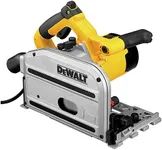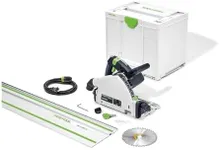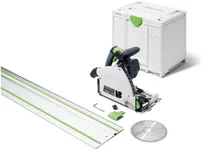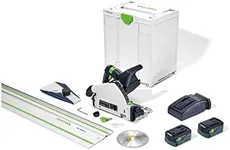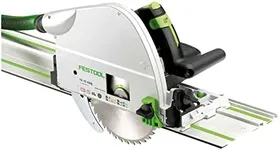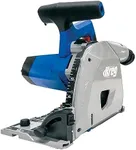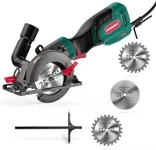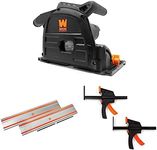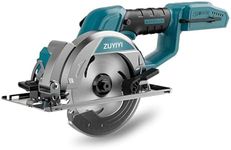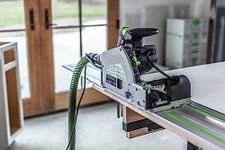Buying Guide for the Best Plunge Saws
Choosing the right plunge saw can make a significant difference in the quality and efficiency of your woodworking projects. A plunge saw, also known as a track saw, is a versatile tool that allows for precise, straight cuts and is particularly useful for cutting large sheets of material. When selecting a plunge saw, it's important to consider several key specifications to ensure you get the best fit for your needs. Understanding these specs will help you make an informed decision and choose a saw that meets your specific requirements.Blade SizeThe blade size of a plunge saw determines the depth of cut it can achieve. Common blade sizes range from 6.5 inches to 8.5 inches. A larger blade size allows for deeper cuts, which is useful for thicker materials. If you primarily work with standard plywood or thinner materials, a smaller blade size may suffice. However, for more versatility and the ability to handle a wider range of projects, a larger blade size is recommended.
Cutting DepthCutting depth refers to how deep the saw can cut into the material. This is crucial for ensuring that the saw can handle the thickness of the materials you plan to work with. Plunge saws typically offer adjustable cutting depths, allowing you to set the depth according to your needs. For general woodworking, a cutting depth of around 2 inches is usually sufficient. For more heavy-duty tasks, look for a saw with a greater cutting depth.
Motor PowerMotor power, measured in amps or watts, indicates the strength and efficiency of the saw's motor. Higher motor power allows the saw to cut through tougher materials with ease and reduces the risk of the saw bogging down during use. For light to medium tasks, a motor power of around 10-12 amps is adequate. For more demanding projects, such as cutting hardwoods or thick materials, a motor power of 13 amps or higher is preferable.
Track CompatibilityTrack compatibility refers to whether the plunge saw can be used with guide rails or tracks, which help ensure straight and accurate cuts. Some plunge saws come with their own proprietary tracks, while others are compatible with tracks from various manufacturers. If precision is a priority for your projects, ensure that the saw you choose is compatible with high-quality tracks. Additionally, consider the availability and cost of additional tracks if you plan to expand your setup.
Dust ExtractionDust extraction is an important feature for maintaining a clean work environment and ensuring good visibility while cutting. Many plunge saws come with built-in dust ports that can be connected to a vacuum or dust collection system. Effective dust extraction helps reduce cleanup time and minimizes the inhalation of harmful dust particles. If you work in a small or enclosed space, prioritize a saw with efficient dust extraction capabilities.
Bevel CapacityBevel capacity refers to the saw's ability to tilt and make angled cuts. This feature is useful for creating beveled edges and performing more complex cuts. Plunge saws typically offer bevel capacities ranging from 0 to 45 degrees. If your projects require a variety of angled cuts, look for a saw with a wide bevel range and easy-to-adjust bevel settings. For standard straight cuts, bevel capacity may be less critical.
Weight and ErgonomicsThe weight and ergonomics of a plunge saw affect its ease of use and maneuverability. A lighter saw is easier to handle and reduces fatigue during extended use, while a well-designed ergonomic handle provides a comfortable grip and better control. Consider the balance between weight and power; a lighter saw may be more convenient for smaller projects, while a heavier saw might offer more stability for larger tasks. Test the saw's feel and comfort to ensure it suits your working style.
